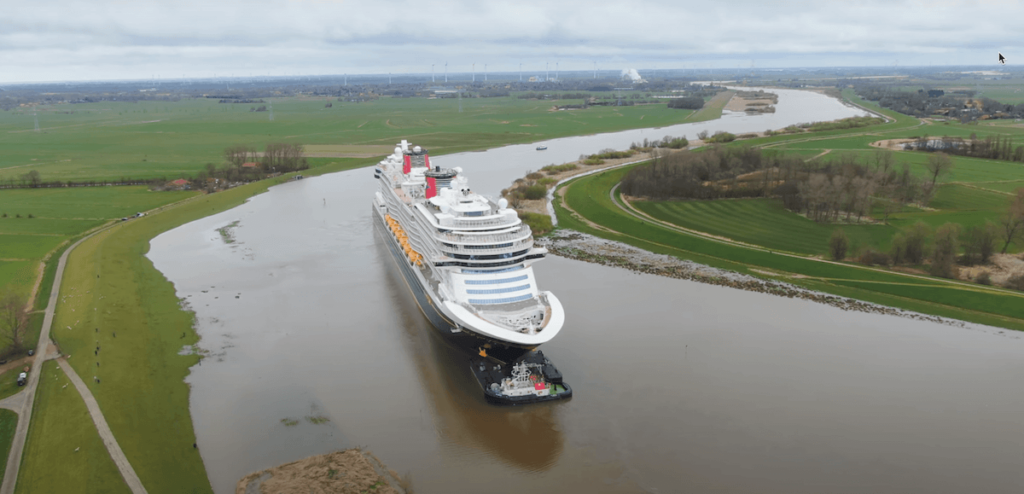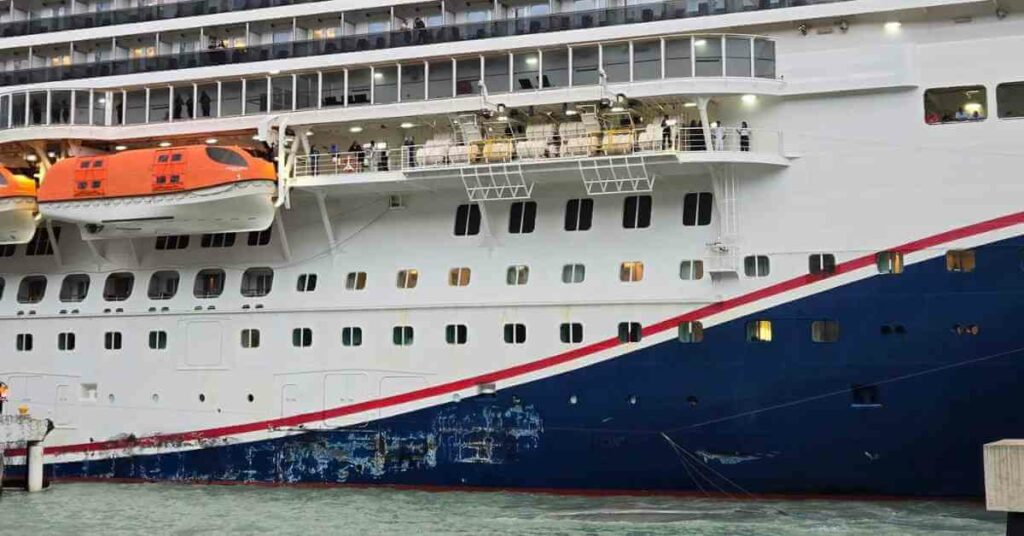Watch: What Is Container Lashing And How It’s Done?
Container shipping is one of the largest stakeholders of sea-borne trade. It contributes to carrying 52% of the world’s cargo.
MSC is the largest shipping company in the containership business, having a total carrying capacity of over 4,284,728 TEUs.
The world’s largest container ship EVER ALOT can carry up to 24000 containers. It is bigger than the empire state building and is equivalent to about 4.5 football fields!
This huge ship encounters rough seas, bad weather, and storms when it sails to sea with containers. So why don’t these stacked containers not fall?
Let’s find out!
There are six degrees of motion at sea that a ship may encounter.
However, pitching, heaving, and rolling are three major forces that impact containers on a ship.
Lateral rolling motion factors the greatest challenge for piles of containers.
If containers are to be carried safely on the deck of a container vessel, they must be tightly connected to the ship.
This is done through a series of lashing systems.
Container lashing is a process of securing containers together on board a ship.
With increasing sizes of ships and container capacities, there are over 14 rows of containers stacked over eight tiers high, equivalent to a 7-story building.
These stacked containers are connected through a series of lashings system which comprises of following main tools –
- Twist lock
- Twist stacker
- Lashing rods (Long and Short rods)
- Turnbuckles
So what is container lashing, and how is it done?
When containers are loaded on ships, they are secured to the ship’s structure, and the containers are placed below them using lashing rods, turnbuckles, twist-locks etc.
This prevents the containers from moving and falling offboard.
Containers are loaded on the deck and under the deck of a ship at the port of loading.
When the containers are loaded below the deck, cell guides with long vertical structures running from top to bottom prevent the containers from moving at sea.
Each container has four corner castings where twist stacker/ Twist locks are fitted and used to stack them with another container.
When a container is loaded underdeck, it is fitted with “TWIST STACKERS “ that fit in all four corner casting shoes of the container and then loaded underdeck.
This locks one container to another and prevents it from moving at sea.
Once all containers are loaded underdeck, a hatch cover is placed over them.
A hatch cover is a movable weathertight structure placed over a cargo hold to prevent any water ingress into the hold.
Once the hatch covers are placed over the cargo hold, containers can be loaded on deck on top of these hatch covers.
Each container is stacked above one another and locked to each other with the help of twist locks.
A twist lock is a special double pin that secures stacked containers.
The pins are conic in shape and snugly fit the oval openings in the corner posts of a container.
By turning the pin 90 degrees, it is secured. The containers are connected by securing the two pints in two containers stacked alongside or on top of each other.
The deck crew must ensure that the twist locks are correctly seated and locked to ensure the containers do not fall out.
Even if one twist lock is not seated correctly, the container stack can topple over and is at risk.
Once all the containers are loaded, they are lashed to the lashing bridge of the ship with the help of lashing rods and turnbuckles.
A lashing bridge is a long steel structure of the ship installed between hatches to permit the lashing of containers to it. The bridges can be up to 2-3 tiers high.
Low-tier containers are lashed with the help of short rods, and high-tier containers are lashed with long rods.
These rods are connected to the lashing bridge with the help of turnbuckles that tightens these rods and keeps the container in place.
A series of lashing systems like this is implemented to ensure the containers are kept intact in place and do not move at sea.
As containers are loaded in port, it is lashed by port stevedores. They are usually responsible for lashing and de-lashing containers in the port.
However, the deck crew and officers are responsible for ensuring all lashings are done correctly.
The ship’s crew regularly checks the container Lashing at sea and significantly tightens it before heavy weather arrives to avoid accidents.
The loading plan is usually given to the ship before arrival, so one must ensure enough lashing equipment is available to lash all containers.
Regular greasing and maintenance must be done whenever possible for all lashing materials, like twist locks and turnbuckles, to ensure efficient operation.
Regular inventor checks should be carried out by ship staff to ensure an adequate number of lashing materials and to discard any damaged pieces.
So this is how 20 million containers make their way across the mighty oceans at any given time.
This does not mean they do not fall at all. If there is human error or the ship encounters extremely rough weather, containers may fall overboard and be lost at sea.
In 2021 total of 3,133 containers were lost overboard.
Let us know which type of cargo you have handled on a ship in the comments.
Disclaimer: The authors’ views expressed in this article do not necessarily reflect the views of Marine Insight. Data and charts, if used in the article, have been sourced from available information and have not been authenticated by any statutory authority. The author and Marine Insight do not claim it to be accurate nor accept any responsibility for the same. The views constitute only the opinions and do not constitute any guidelines or recommendations on any course of action to be followed by the reader.
The article or images cannot be reproduced, copied, shared or used in any form without the permission of the author and Marine Insight.
Do you have info to share with us ? Suggest a correction

About Author
Zahra is an alumna of Miranda House, University of Delhi. She is an avid writer, possessing immaculate research and editing skills. Author of several academic papers, she has also worked as a freelance writer, producing many technical, creative and marketing pieces. A true aesthete at heart, she loves books a little more than anything else.
Latest Videos Articles You Would Like:
- Watch: Giant Disney Cruise Ship Maneuvers Through Impossibly Narrow River
- Cruise Ship Damaged Due To Severe Weather, Passengers Stuck Abroad
- Archaeologists Examine 19th-Century Shipwreck Found On Canadian Coast
- Australia Stops Livestock Ship From Sailing Around Africa To Israel Amidst Houthi Attacks
- Iran Warns U.S. Of Targeting Cargo Ships Following Latest Airstrikes On Houthis
- Watch: Ukrainian Forces Destroy Russian Missile Boat In Black Sea Operation
Daily Maritime News, Straight To Your Inbox
Sign Up To Get Daily Newsletters
Join over 60k+ people who read our daily newsletters
By subscribing, you agree to our Privacy Policy and may receive occasional deal communications; you can unsubscribe anytime.















